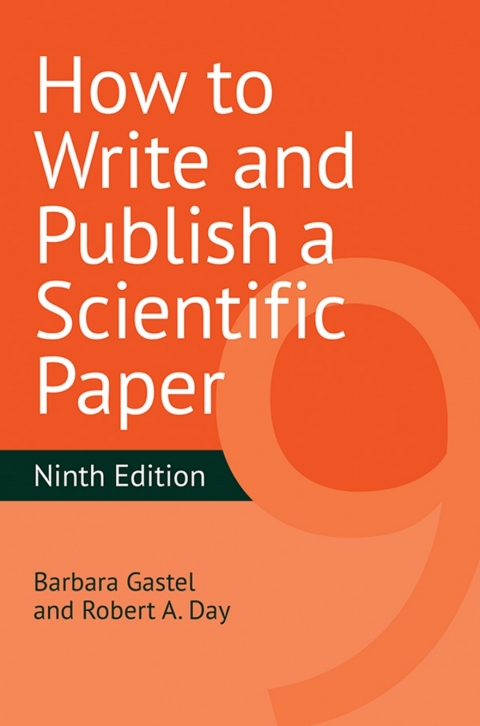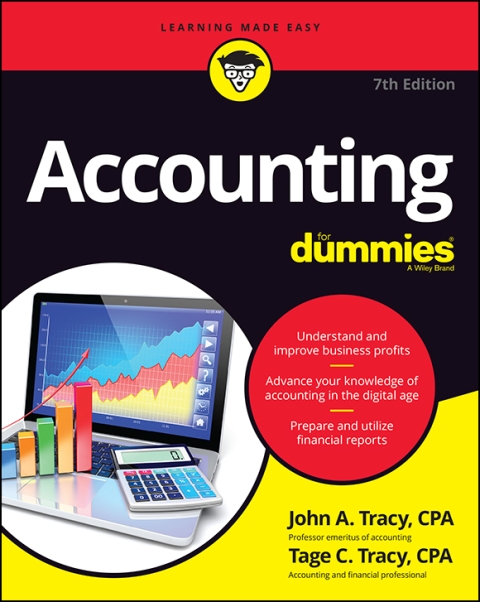Description
Efnisyfirlit
- Title Page
- Copyright
- Dedication
- Contents
- Preface
- A Word to International Readers
- Acknowledgments
- Part I: Some Preliminaries
- 1. What Is Scientific Writing?
- The Scope of Scientific Writing
- The Need for Clarity
- Receiving the Signals
- Understanding the Signals
- Understanding the Context
- Organization and Language in Scientific Writing
- 2. Historical Perspectives
- The Early History
- The Electronic Era
- The IMRAD Story
- 3. Approaching a Writing Project
- Establishing the Mindset
- Preparing to Write
- Doing the Writing
- Revising Your Work
- 4. What Is a Scientific Paper?
- Definition of a Scientific Paper
- Organization of a Scientific Paper
- Shape of a Scientific Paper
- Other Definitions
- 5. Ethics in Scientific Publishing
- Ethics as a Foundation
- Authenticity and Accuracy
- Originality
- Credit
- Ethical Treatment of Humans and Animals
- Disclosure of Conflicts of Interest
- 6. Where to Submit Your Manuscript
- Decide Early, Decide Well
- Prestige and Impact
- Access
- Avoiding Predatory Journals
- Other Factors to Consider
- Using Instructions to Authors
- Part II: Preparing the Text
- 7. How to Prepare the Title
- Importance of the Title
- Length of the Title
- Need for Specific Titles
- Importance of Syntax
- The Title as Label
- Abbreviations and Jargon
- More About Title Format
- 8. How to List the Authors and Addresses
- Definition of Authorship
- The Order of the Names
- Defining the Order: An Example
- Specifying Contributions
- Proper and Consistent Form
- Solutions: ORCID and More
- Listing Affiliations and Addresses
- 9. How to Prepare the Abstract
- Definition
- Types of Abstracts
- Clarity and Conciseness
- Akin to Abstracts
- Keywords
- Visual Varieties
- 10. How to Write the Introduction
- Guidelines
- Reasons for the Guidelines
- Exceptions
- Citations and Abbreviations
- 11. How to Write the Materials and Methods Section
- Purpose of the Section
- Materials
- Methods
- Headings
- Measurements and Analysis
- Need for References
- Tables and Figures
- Correct Form and Grammar
- 12. How to Write the Results
- Content of the Results
- How to Handle Numbers
- Strive for Clarity
- Avoid Redundancy
- A Supplement on Supplementary Material Online
- 13. How to Write the Discussion
- Discussion and Verbiage
- Components of the Discussion
- Noting Strengths and Limitations
- Significance of the Paper
- Conclusions
- Defining Scientific Truth
- 14. How to State the Acknowledgments
- Ingredients of the Acknowledgments
- Being Courteous
- 15. How to Cite the References
- Rules to Follow
- Checking Against the Original
- Electronic Aids to Citation
- Citations in the Text
- Reference Styles
- Titles and Inclusive Pages
- Journal Abbreviations
- Some Trends in Reference Format
- Examples of Different Reference Styles
- Citing Electronic Material
- One More Reason to Cite Carefully
- Part III: Preparing the Tables and Figures
- 16. How to Design Effective Tables
- When to Use Tables
- How to Arrange Tabular Material
- Exponents in Table Headings
- Following the Journal’s Instructions
- Titles, Footnotes, and Abbreviations
- Additional Tips on Tables
- 17. How to Prepare Effective Graphs
- When Not to Use Graphs
- When to Use Graphs
- How to Prepare Graphs
- Symbols and Legends
- A Few More Tips on Graphs
- Beyond Graphs
- Sources Offering Further Assistance
- 18. How to Prepare Effective Photographs
- Photographs and Micrographs
- Submission Formats
- Cropping and Combining
- Necessary Keys and Guides
- Color
- Part IV: Publishing the Paper
- 19. Rights and Permissions
- What is Copyright?
- Copyright of Unpublished Materials
- Creative Commons Licenses
- Obtaining Permissions
- 20. How to Submit the Manuscript
- Checking Your Manuscript
- Submitting Your Manuscript
- The Cover Letter
- Sample Cover Letter
- Electronic Cover Letters
- Confirmation of Receipt
- 21. The Review Process (How to Deal with Editors)
- Functions of Editors, Managing Editors, and Manuscript Editors
- The Review Process
- The Editor’s Decision
- The Accept Letter
- The Modify Letter—And How to Respond to It
- The Reject Letter
- Editors as Gatekeepers
- 22. The Publishing Process (How to Deal with Proofs)—and After Publication
- The Copyediting and Proofing Processes
- Why Proofs Are Sent to Authors
- Misspelled Words
- Marking the Corrections
- Additions to the Proofs
- Addition of References
- Proofing the Illustrations
- When to Complain
- Reprints
- Publicizing and Archiving Your Paper
- Celebrating Publication
- Part V: Doing Other Writing for Publication
- 23. How to Write a Review Paper
- Characteristics of a Review Paper
- Preparing an Outline
- Types of Reviews
- Writing for the Audience
- Importance of Introductory Paragraphs
- Importance of Conclusions
- Additional Tips for Writing Review Articles
- 24. How to Write Opinion (Letters to the Editor, Editorials, Book Reviews, and Essays)
- Writing Informed Opinion
- Letters to the Editor
- Editorials
- Book (and Other Media) Reviews
- Essays
- 25. How to Write a Book Chapter or a Book
- How to Write a Book Chapter
- Why (or Why Not) to Write a Book
- How to Find a Publisher
- How to Prepare a Book Manuscript
- How to Participate in the Publication Process
- How to Help Market Your Book
- 26. How to Write for the Public
- Why Write for General Readerships?
- Finding Publication Venues
- Engaging the Audience
- Conveying Content Clearly
- Emulating the Best
- Part VI: Conference Communications
- 27. How to Present a Paper Orally
- How to Get to Present a Paper
- A Word of Caution
- Organization of the Paper
- Presentation of the Paper
- Slides
- Presenting Online
- Making a Mini-Presentation
- The Audience
- A Few Answers on Questions
- 28. How to Prepare a Poster
- Popularity of Posters
- Organization
- Preparing the Poster
- Presenting the Poster
- 29. How to Write a Conference Report
- Definition
- Format
- Presenting New Ideas
- Editing and Publishing
- Part VII: Scientific Style
- 30. Use and Misuse of English
- Some Basics
- Some Finer Points
- On a Lighter Note
- 31. Avoiding Jargon
- Definition of Jargon
- Mumblespeak and Other Sins
- Bureaucratese
- Special Cases
- Mottoes to Live By
- 32. How and When to Use Abbreviations
- General Principles
- Good Practice
- Units of Measurement
- Special Problems
- SI (Système International) Units
- Other Abbreviations
- 33. Writing Clearly Across Cultures and Media
- Readable Writing
- Consistency in Wording
- Serving International Readers
- A Few Words on Email Style
- Writing for Online Reading
- 34. How to Write Science in English as a Foreign Language
- English as the International Language of Science
- The Essentials: Content, Organization, and Clarity
- Cultural Differences to Consider
- Some Common Language Challenges
- More Strategies for English-Language Writing
- More Resources
- Part VIII: Other Topics in Scientific Communication
- 35. How to Write a Thesis
- Purpose of the Thesis
- Tips on Writing
- When to Write the Thesis
- Relationship to the Outside World
- From Thesis to Publication
- 36. How to Prepare a Curriculum Vitae, Cover Letter, and Personal Statement
- What’s a Curriculum Vitae? What’s It Good For?
- What to Put in (and What to Leave Out)
- Other Suggestions
- Preparing a Cover Letter
- Writing a Personal Statement
- 37. How to Prepare Grant Proposals and Progress Reports
- Preparing a Grant Proposal
- Writing a Progress Report
- 38. How to Write a Recommendation Letter—and How to Ask for One
- Deciding Whether to Write the Letter
- Gathering the Information
- Writing Letters
- A Light Aside
- If You’re Seeking Recommendation Letters
- 39. How to Work with the Media
- Before the Interview
- During the Interview
- After the Interview
- 40. How to Provide Peer Review
- Responding to a Request for Peer Review
- Peer-Reviewing a Scientific Paper
- Providing Informal Peer Review
- For More on Reviewing
- 41. How to Edit Your Own Work
- Preparing to Edit Your Work
- Items to Notice: 8 Cs
- A Good Choice: Checklists
- Finding and Working with an Author’s Editor
- 42. How to Seek a Scientific-Communication Career
- Career Options in Scientific Communication
- An Admittedly Unvalidated Quiz
- Career Preparation
- Entering the Field and Keeping Up
- Appendix 1: Selected Journal Title Word Abbreviations
- Appendix 2: Words and Expressions to Avoid
- Appendix 3: SI (Système International) Prefixes and Their Abbreviations
- Appendix 4: Some Helpful Websites
- Glossary
- References
- Index






Reviews
There are no reviews yet.